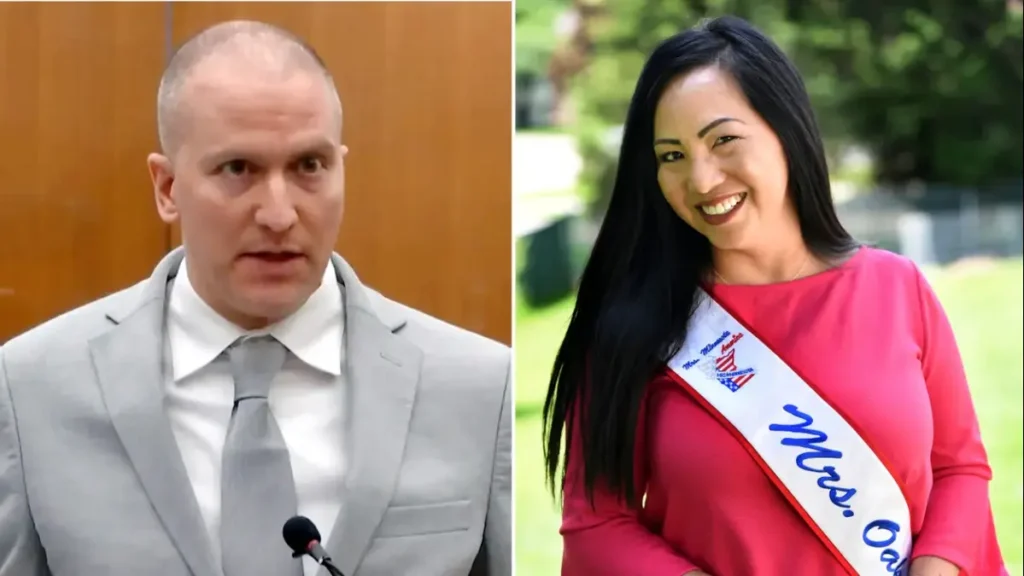Introduction kellie chauvin
Kellie Chauvin, a Hmong American woman, gained international attention in 2020 due to her association with her husband, Derek Chauvin, the former Minneapolis police officer convicted of murdering George Floyd. As the world watched the trial unfold, many questions arose about Kellie’s life, Kellie Chauvin her relationship with Derek, and her role in the events that transpired. This article delves into Kellie’s background, her marriage to Derek, and the controversies surrounding her actions during the trial.
Early Life and Background
Kellie Chauvin, born Kellie May Xiong, is a refugee who fled Laos with her family at a young age. She grew up in Eau Claire, Wisconsin, and later moved to Minnesota, where she met Derek Chauvin. Kellie’s family has been entirely private about their past, but it is known that they faced significant challenges as refugees, including language barriers and cultural adjustments. Kellie’s experiences as a refugee and a woman of color have shaped her perspective and influenced her actions.
Kellie’s educational background needs to be well-documented, but it is believed that she attended a local community college in Minnesota. She was a realtor and a beauty pageant contestant before marrying Derek in 2010. Her involvement in the Hmong community and her cultural heritage have been significant aspects of her life. Kellie’s family has been active in the Hmong community, and her father, a veteran, has been recognized for his service.
Kellie’s upbringing and cultural background have likely influenced her worldview and relationships. As a Hmong woman, she may have faced cultural and societal expectations, such as prioritizing family and community over personal aspirations. Her experiences as a refugee and a woman of color have likely shaped her resilience and adaptability.
Marriage to Derek Chauvin

Kellie and Derek Chauvin’s marriage was seen as a symbol of interracial harmony and cultural blending. However, their relationship has been scrutinized due to Derek’s actions and Kellie Chauvin perceived complicity. The couple met while working at a hospital, where Derek was a police officer, and Kellie was a radiologist. They had two children together and were considered a respectable family in their community.
Kellie’s support for Derek during the trial raised eyebrows, with many questioning her motives and moral stance. While she has not publicly condoned Derek’s actions, her decision to stand by him has sparked debates about victim-blaming and enabling. Kellie’s cultural background and experiences as a refugee may have influenced her loyalty to her family and community, even in the face of wrongdoing.
Their marriage was also marked by financial difficulties, with the couple filing for bankruptcy in 2017. This has led to speculation about Kellie’s motivations for staying in the marriage, with some suggesting that she may have been financially dependent on Derek.
The Trial and Controversies
During the trial, Kellie Chauvin’s behavior and statements sparked controversy. She filed for divorce from Derek shortly after his arrest, citing an “irretrievable breakdown” of their marriage. However, she later appeared in court to support him, which many saw as a contradictory move. Kellie’s decision to wear a traditional Hmong outfit to the trial sparked cultural appropriation debates, with some accusing her of using her heritage to garner sympathy.
Kellie’s testimony during the trial also raised questions about her credibility. She claimed not to know Derek’s actions on the day of George Floyd’s murder despite being in contact with him throughout the day. Some have criticized her for downplaying her husband’s actions and failing to acknowledge the harm caused to the Floyd family.
Kellie’s actions during the trial have also sparked conversations about victim-blaming and enabling. Her decision to support Derek, despite his conviction, has raised questions about accountability and moral responsibility. The case has highlighted the need for nuanced discussions about cultural heritage, gender, and power dynamics in the context of social justice.
Cultural and Social Implications
Some support her loyalty to her family, Kellie Chauvin and others criticize her complicity in Derek’s actions. The case has sparked a broader conversation about the Hmong community’s relationship with law enforcement and the criminal justice system.
Kellie’s story has also highlighted the experiences of Hmong women, who often face cultural and societal expectations prioritizing family and community over personal aspirations. Her actions have sparked debates about gender roles, victim-blaming, and enabling within the Hmong community.
Social Justice and Accountability
The Chauvin case has raised questions about accountability and moral responsibility in the face of social injustice. Despite his conviction, Kellie Chauvin Kellie’s decision to support Derek has sparked conversations about the role of personal relationships in perpetuating systemic injustices.
The case has also highlighted the need for nuanced discussions about cultural heritage, gender, and power dynamics in the context of social justice. Kellie Chauvin experiences as a refugee and a woman of color have been subject to scrutiny, with some using her as an example of the “model minority” myth.
Conclusion
Kellie Chauvin’s life and actions have become a focal point in the larger conversation about social justice, cultural identity, and accountability. While her experiences as a refugee and a woman of color are significant, they do not excuse her perceived complicity in her husband’s actions.
As we move forward, nuanced discussions about the complexities of human experience and the need for accountability in the face of wrongdoing are essential. Kellie’s story reminds us of the intricate web of power dynamics, cultural heritage, and personal responsibility that shapes our actions and decisions.


